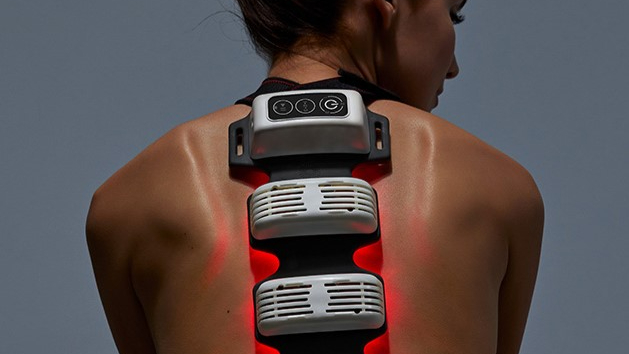
Light Therapy: What Is It and Why Red Works Best
Aug 15, 2024
3 min read
0
3
0

In recent years, therapeutic light, or light therapy, has emerged as a popular and effective treatment that is natural, chemical-free, and safe becoming more widely adopted by major professional athletes
What Is Therapeutic Light?
Light therapy, also known as photobiomodulation, encompasses various treatments that use light energy to deliver therapeutic benefits. However, not all light is the same. Some wavelengths offer significant health benefits, while others can be harmful. So, how do you identify the most beneficial types of light?
What Is Red Light Therapy?
Red light therapy, also known as low-level laser therapy or LED therapeutic light, involves using light-emitting diodes (LEDs) in red and near-infrared wavelengths to support the body’s natural healing processes. Despite ongoing myths and misconceptions—such as claims that it’s a dubious new age fad or that it’s the same as a sauna—red light therapy is well-established and backed by science.
The concept of red light therapy is far from new. Danish physician Niels Ryberg Finsen first explored its potential over a century ago, using red light to treat conditions like smallpox and lupus. His pioneering work earned him the Nobel Prize in Medicine in 1903.
In the mid-1990s, NASA scientists advanced this technology after discovering that LEDs could accelerate wound healing in astronauts during space missions. Subsequent research revealed that red light therapy significantly improved recovery from musculoskeletal injuries in Navy SEALs, reduced wound healing times for submarine crew members, and alleviated pain from oral mucositis in children by 47%
Red Light vs. Near Infrared Light
Red light therapy mimics the positive effects of natural sunlight during dusk and dawn, but without the harmful UV rays. Research indicates that combining red and near-infrared light wavelengths achieves the greatest therapeutic benefits.
So, what distinguishes these two types of light? Here’s a simple comparison to help clarify their differences:
Red Light | Near Infrared Light |
Belongs to the visible light spectrum | Belongs to the invisible light spectrum |
Wavelengths of 625-700 nanometers | Wavelengths of 700-2,500 nanometers |
Mostly effective on the surface of the skin | Effective both on the surface of the skin and 1 ½ inch underneath it |
Used primarily (though not exclusively) for wound healing, skin rejuvenation, etc. | Used to relieve pain, repair muscle, recharge energy, recover faster, etc. |
There are thousands of research studies demonstrating the effectiveness of red light therapy, highlighting a vast array of benefits. Here are just a few examples:
Wound Healing:
Red light therapy accelerates wound healing and improves skin conditions by reducing fine lines, wrinkles, and skin roughness while boosting collagen density, which enhances joint health and skin elasticity.
Energy Boost:
Near-infrared light increases the production of adenosine triphosphate (ATP), which powers various cellular processes, helping to energize your body.
Pain Relief and Recovery:
A combination of red and near-infrared light can alleviate pain, repair muscle tissue, and speed up recovery after exercise.
Red Light vs. UV Light
As previously mentioned, red light therapy mirrors some of the beneficial effects of natural sunlight but without the harmful UV rays. So, what exactly is UV light?
UV (ultraviolet) light consists of shorter wavelengths that are invisible to the human eye, typically ranging from 100 to 400 nanometers. This is much shorter than the wavelengths of red and near-infrared light.
The Sun emits a full spectrum of UV radiation, including UV-A, UV-B, and UV-C rays. While UV-A rays are largely absorbed by the Earth's atmosphere, UV-B rays can cause sunburn and increase the risk of DNA damage and cancer.
While sunlight provides essential Vitamin D, it also carries risks that can outweigh its benefits. In contrast, red light therapy contains no UV rays and emits very little heat, eliminating the risks of burns, DNA damage, and cancer.
Red Light vs. Infrared Light
Infrared light has much larger wavelengths—ranging from approximately 15 micrometers to 1 millimeter—compared to near-infrared light. These wavelengths are closer to those found in the microwave region of the electromagnetic spectrum.
Infrared light is often used in saunas for its heating effects, which aim to provide therapeutic benefits. However, unlike near-infrared light, which can penetrate about 1.5 inches below the skin's surface, infrared light only reaches around 0.04 inches beneath the skin before being absorbed by the body’s water content.
Moreover, infrared saunas emit high levels of electromagnetic fields, which, similar to UV radiation, can potentially cause cellular DNA damage and increase cancer risk. In contrast, red and near-infrared light therapy emit very low levels of electromagnetic fields, making them safer alternatives.
Red light therapy has been studied for over a century and is supported by extensive research demonstrating its health benefits. It does not involve heat, UV rays, or harmful electromagnetic fields, making it not only effective but also a safer form of light therapy.
Visit Acceler8 Athlete Recovery to experience the benefits of infrared light therapy firsthand. You can book a session for either red light therapy or infrared sauna therapy and see the positive effects for yourself.
.jpg)

















